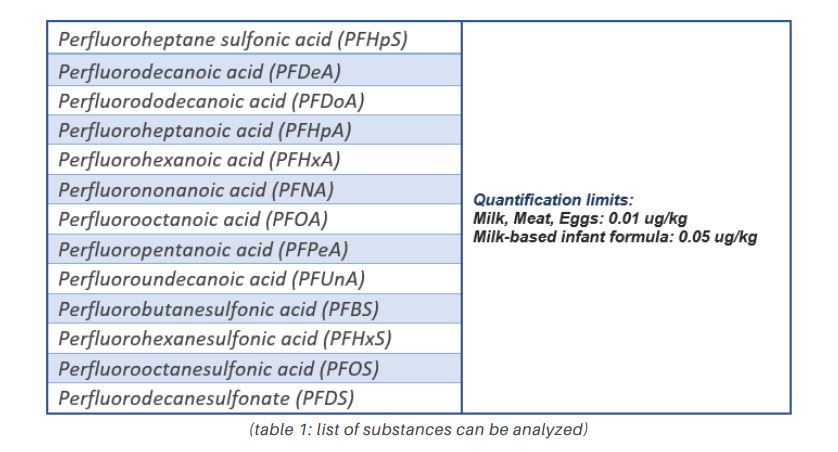The widespread use of PFAs, together with their resistance to natural degradation processes, leads to a high degree of environmental contamination becoming widely present in the water environment and consequently in agricultural products and food.
PFAS (perfluoroalkyl substances) are a large group of synthetic chemical compounds characterized by the replacement of most of the hydrogen atoms with fluorine atoms that gives them particular physical-chemical characteristics such as water and oil repellency and stability at high temperatures.
Per- and polyfluoroalkyl substances (PFASs) are highly versatile and used in industrial and consumer applications: are present in large quantities in the agricultural sector, in food packaging, in personal care products (cosmetics), textiles and various consumer products.
The widespread use of these substances, together with their resistance to natural degradation processes, leads to a high degree of environmental contamination: they easily penetrate into the aquifers becoming widely present in the water environment and consequently in agricultural products and food.
EFSA published in 2020 a scientific opinion on the risks to human health regarding perfluoroalkyl substances (PFAS) to which humans are exposed through the food chain due to the high level of environmental pollution.
Several studies have shown their danger to human health, in particular, they are recognized as endocrine disruptors capable of altering the body's processes involving hormones responsible for development, fertility and other essential cellular functions.
Exposure can occur in various ways, including foods where these substances are most frequently present such as drinking water, fish, fruit, eggs and egg products or even through food packaging or equipment used for food processing.
The four PFAS on which EFSA's evaluation has focused are perfluorooctanoic acid (PFOA), perfluorooctane sulfonic acid (PFOS), perfluorononanoic acid (PFNA) and perfluorohexane sulfonic acid (PFHxS).
Pending harmonized legislation, attention is increasingly paid to monitoring the level of contamination from PFAS which provides for control and verification actions to ensure the health and safety of the final consumer.
Neotron proposal
With the QuEChERS method, Neotron laboratory is able to quantify the PFASs substances (tab. 1) in foods most subjected to contamination. The procedure involves a liquid-liquid extraction using water and acetonitrile and subsequent detection is performed using the UPLC-MS / MS technique.

To learn more please don't hesitate to contact us.


